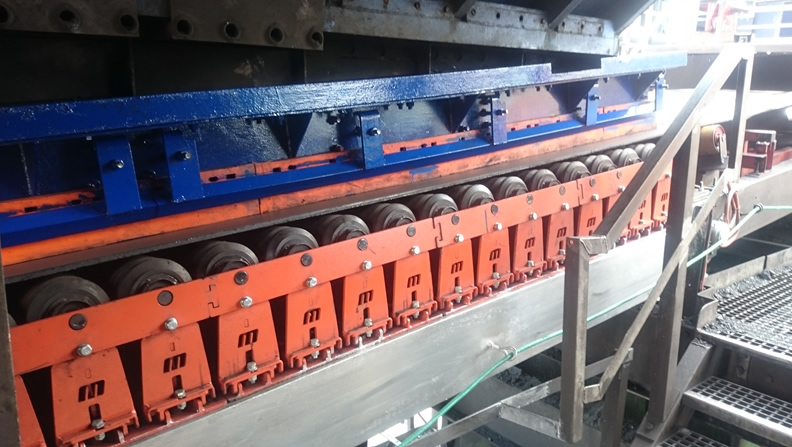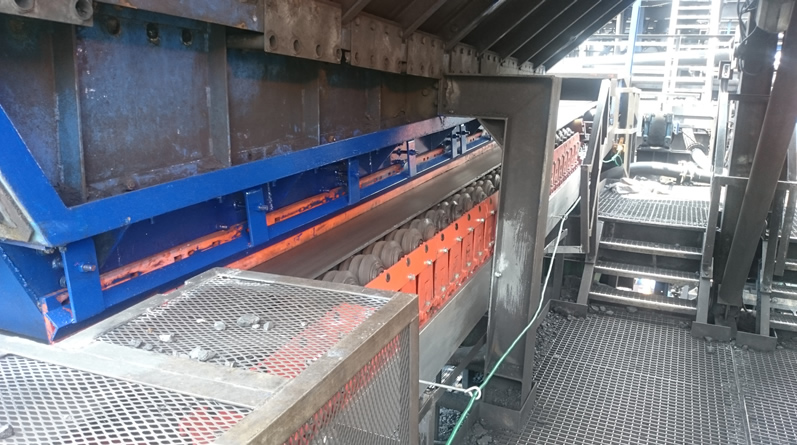| Products Used | ApronSeal™ Single Skirting , High Speed Impact Cradle |
|---|---|
| Product Types Used | Transfer Point Solutions , Belt Sealing , Belt Support |
| Industry | Coal Mining |
| Customer | Coal Mine in Witbank, Mpumalanga, South Africa |
Problem

A coal mine in Eastern South Africa producing 3.4 million tons (3.1 mil. tonnes) of coal per year was experiencing heavy spillage and system damage along the length of a main conveyor due to inadequate loading zone equipment. Impact idlers allowed excessive belt sag, causing high volumes of spillage. Dust and fines fouled idlers, and rocks got lodged between the belt and the skirt, resulting in unscheduled downtime due to frequent equipment failures and chute liner replacements. Material built up and threatened to encapsulate the return run of the belt, so labor was diverted for cleanup, further raising operating costs.
Solution

Martin South Africa was invited to offer a solution. Technicians recommended the installation of seven EVO® High Speed Impact Cradles along the length of the module 3 feeder unit. Using elastomer bar suspension to absorb shock from impact, the specially designed idlers exceed the operating limits of typical impact bar-type belt support cradles. The rolling components minimize friction on the belt and maximize the life of the belt support structure. Low-friction polyurethane Martin® ApronSeal™ Single Skirting was also installed to contain material and retain a tight seal on the running belt, further reducing spillage.
Results

Six months after the installation, the volume of spillage has been reduced considerably, and the sealing system remains durable because no material is entrapped beneath the seal. The lack of fugitive material has mitigated wear and tear on components and reduced the amount of labor needed for cleanup, maintenance and replacement of broken equipment. "We're very happy with the end result," said a plant manager. "The project was so successful that we are going to convert the other two feeders in the plant (up to 14 more transfer points). This has definitely decreased the cost of operation."

We've solved your problem somewhere before!
While your problem seems unique and frustrating, with 70+ years of solving similar problems around the world, and with the most experienced and educated people on our teams, we can assure you that we’ve “Been There, Done That.” At least close enough to know what needs to be done next and adjust for your situation.
Put Us To The Test For Free! Let Us Give You a Solution.